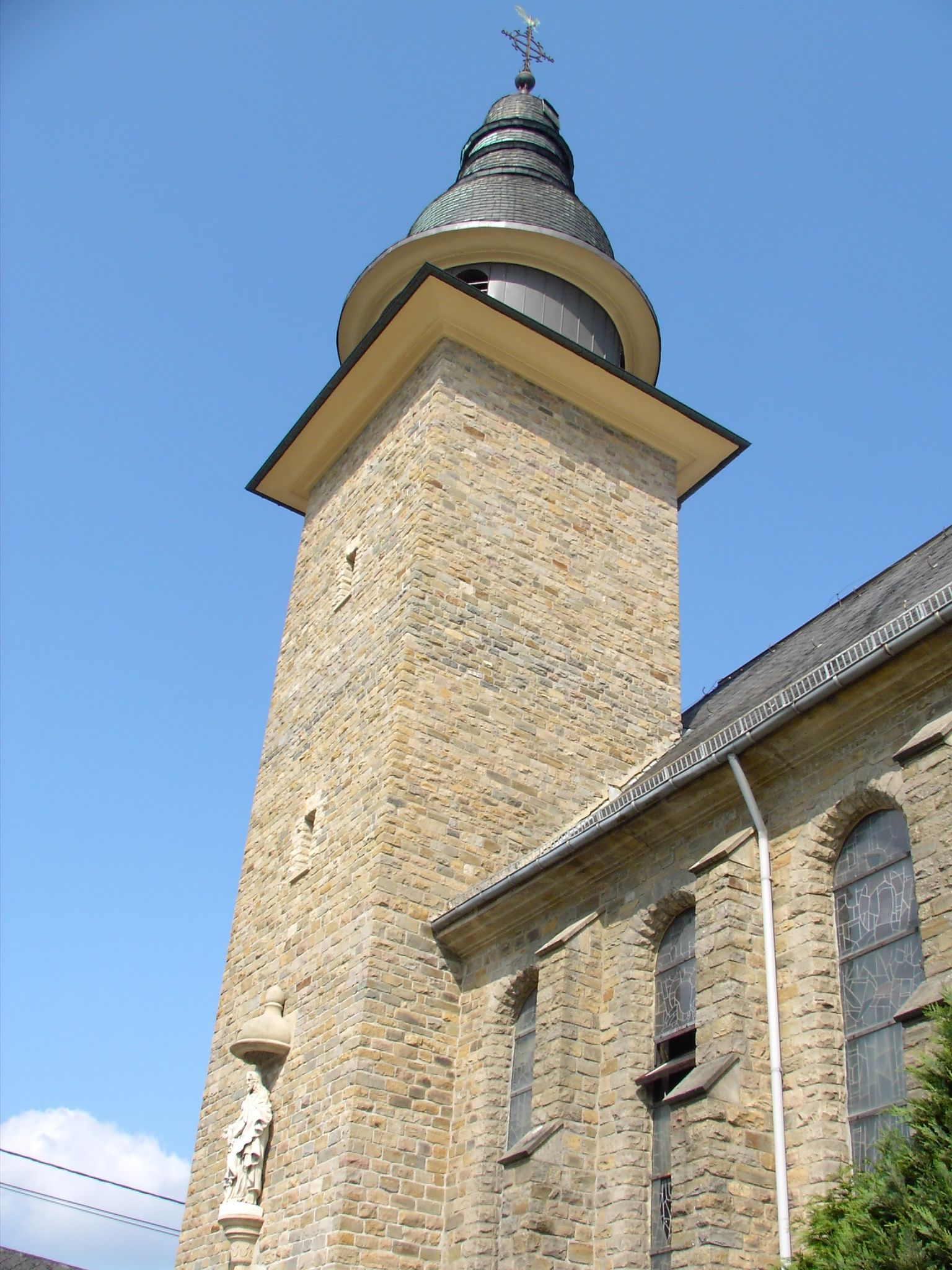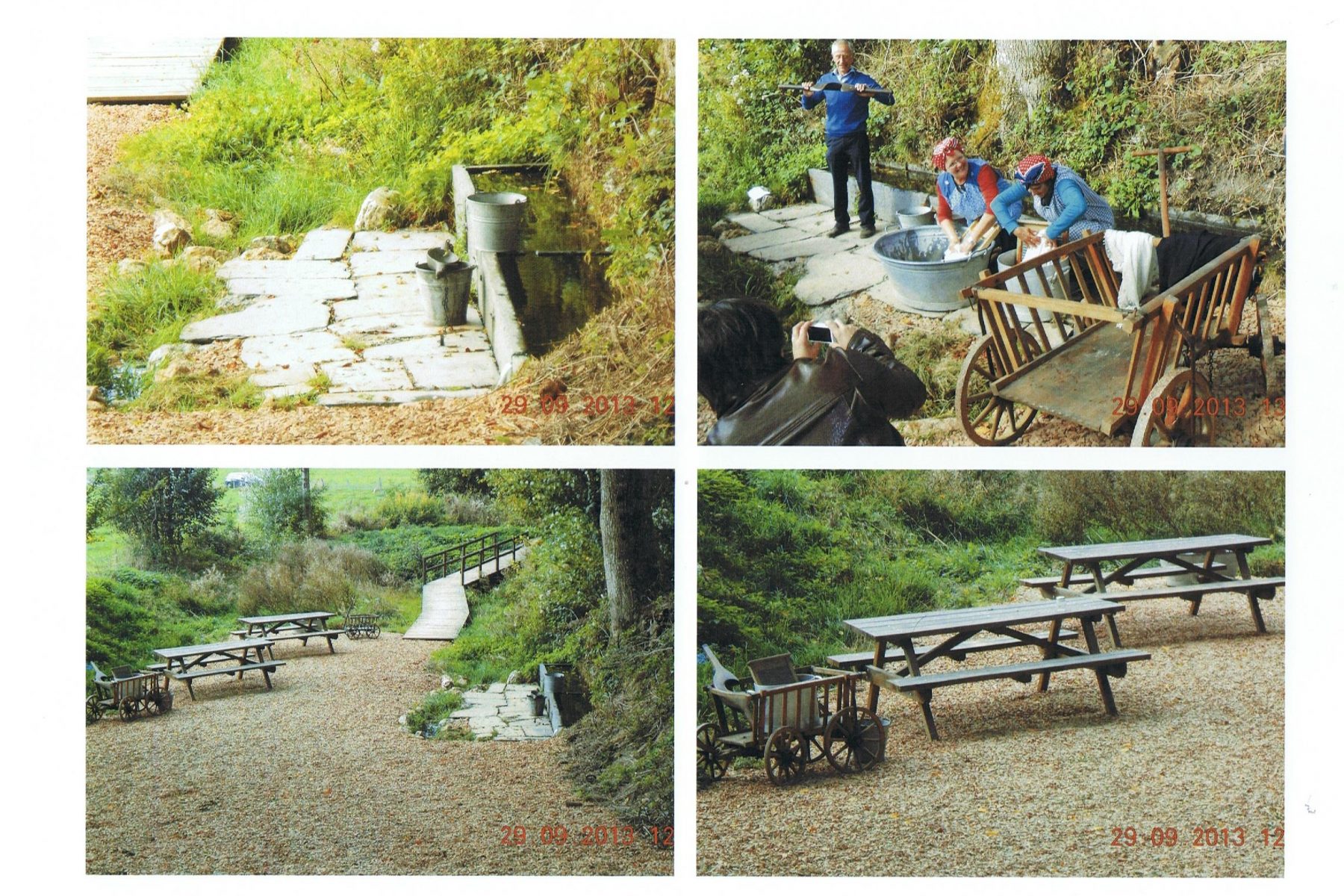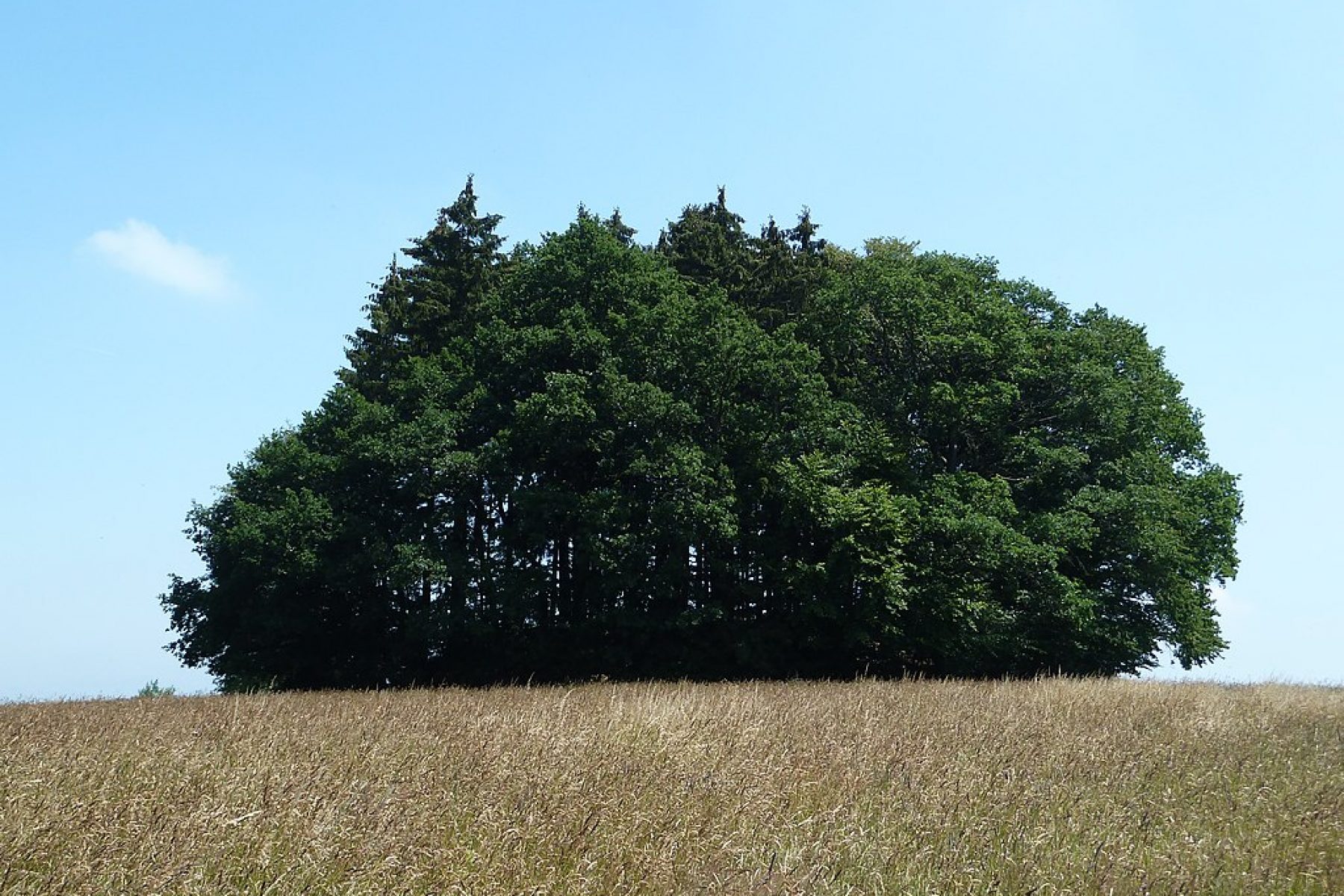
Church of St. John the Baptist in Maldingen
The church in Maldingen, consecrated in 1926 by the then Auxiliary Bishop of Liège, Bishop Kerkhofs, was built according to a design by the architect Cunibert from Malmedy. The current church is located on the site of a chapel dedicated to St. John, which was first mentioned in the parish archives of Aldringen in 1688 and replaced by a new building in 1776. The quarrystone building consists of three naves united under one roof. The 50-meter-high tower is topped with a round, stepped helmet roof. This construction method is typical of Cunibert, and the church he built in Medell also has an onion dome.
Inside the church, the star vault and the glass rose window are impressive. The altars, the communion bench and the holy water font are neo-Romanesque in style and made of black and white-brown marble.
On the back wall under the organ is a niche from a Baroque altar with a statue of St. Matthew the Evangelist, which probably comes from the old chapel. On the right confessional is an angel with a trumpet; it was part of a pulpit that was located in the church of the Luxembourg border town of Weiswampach.
Source: Churches and chapels in East Belgium by Freddy Derwahl and Johannes Weber

The old village watering place
Also the spring must have been very productive. A witness of it is the still quite well preserved trough in “Rechter Blaustein”. The trough served not only as a watering place for domestic animals, but also as a washing place for the nearby inhabitants. However, after the village was connected to the municipal water supply system in 1968, the trough lost its purpose, fell into oblivion and became … a wild garbage dump.
Garbage and wild plants overgrew the trough and the entire area.
In 2003, however, a couple of determined men went into action and removed all the garbage by hand.
The financial support was also found to remove the upper layer of soil by machine.
A drainage system was installed to drain the area. In 2008, after a ” VoE Village Community ” had been created, some professionals, in collaboration with the “Fondation Rurale de Wallonie” drew up a plan to revive the watering place.
With subsidies from both the Walloon Region and the High Fens – Eifel Nature Park and the active support of the community, the entire site was restored to its current state.
Volunteers in the village laid the access and a walkway.
The main goal, however, was to keep the watering place as close to nature as possible, so that fauna and flora can flourish. The school community took on a sponsorship of this small heritage site by regularly participating in its maintenance, installing and cleaning nesting boxes…. “May this spot give peace to the visitor and bring the beauty of nature a little closer”.
Many thanks to Mr. Jakob THOMMESSEN from Maldingen for the aforementioned text as well as the pictures.

Hochtumsknopf
The excavations that have taken place here since 1825 have brought to light several finds: In addition to sherds, bones and ashes, a slate roof of 3 square feet, remains of a clay vessel, parts of a harness covered with brown lacquer and a large iron container were found. Also discovered in the center was a piece of agate, an urn with sherds, and the tip of a spear in a large stone container. One local historian believed that the actual treasure of the Hochtumsknopf, namely a Roman general in golden armor, had not yet been found, as it might be below the ground level where the mound had been piled. Others saw in the mound a Roman tomb, namely that of the Roman legate Cotta, who, together with his comrade-in-arms Sabinus, had been lured into a trap and slain by Ambiorix, the Eburone chieftain. While Cotta was buried here, the grave of Sabinus is said to be on the Steinemann (near Espeler).
This interpretation, however, has to be relegated to the realm of legend, since in the area of the Steinemann and also at the Hochtumsknopf such precious ancient finds have never been made.
However, later excavations by unknown amateur archaeologists may have taken place here, as the trenches and furrows on the hill show; however, nothing is known about the results. Today the mound is inhabited by foxes – the only ones who can probably give information about the contents of the mound.
(Text by Mr. KLAUSER Klaus-Dieter)
